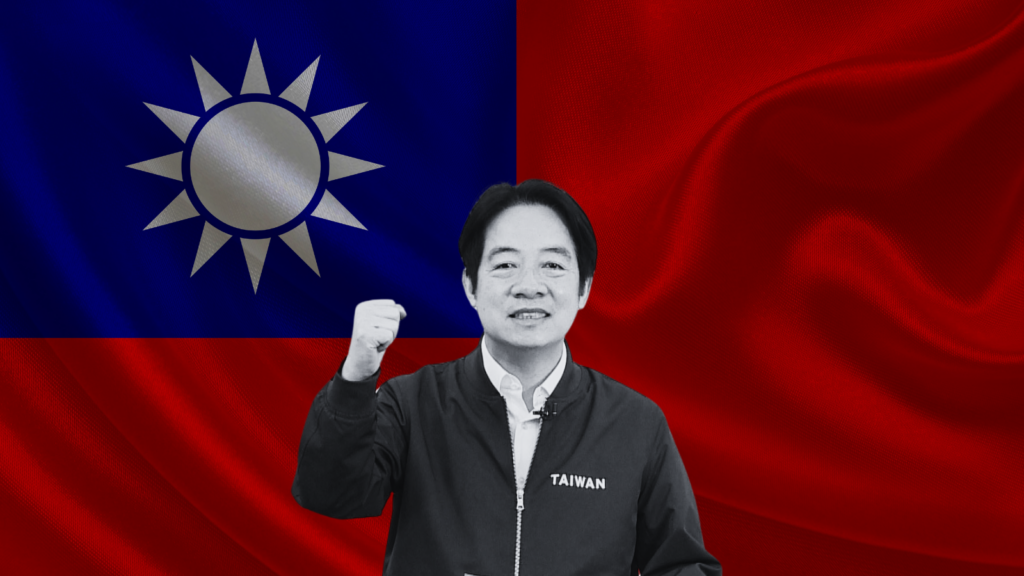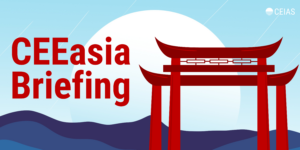January 13th was a celebration of democracy in Taiwan. The small island country, which emerged in the 1990s from authoritarian rule (having experienced one of the longest periods of martial law in the world), held joint presidential and parliamentary elections. The current ruling party maintained the presidency; however, the new president will face a hung parliament (none of the parties won a majority). Although the results do not come as a huge surprise – they are in line with the trend captured in opinion polls in the weeks preceding the elections – the race was intense, and the outcome was until the last minute uncertain.
The presidential election
With Lai Ching-te (a.k.a. William Lai) the ruling DPP (from the pan-green camp) secured its third consecutive term for the presidency. For the DPP, on one hand, this marks a significant success as it is the first time a party has held the presidency for more than two terms in a row. On the other hand, there has been widespread disillusionment with the DPP over inequality and housing prices in Taiwan, and Lai received as little as 40% of the vote.
In comparison, Lai’s predecessor, current President Tsai Ing-wen (in office until May 2024), secured her second term in the last elections in 2020 with 57%. Of course, the circumstances are quite different. DPP’s victory in 2020 can be (at least partly) attributed to the impact of the 2019 protests in Hong Kong, while this time around, it was mainly the split vote in the pan-blue camp that secured the DPP the presidency.
Taiwan’s party system has traditionally been dominated by two major parties, the KMT (leader of the pan-blue camp) and the DPP (leader of the pan-green camp). However, in these elections a third party, the TPP, and its founder Ko Wen-je rose to prominence. While Ko, with no flagship policy but claims of charting a third way (his motto was “push down the blue and green barrier”), lost, his performance was a huge success given he garnered over 20% of the vote. He took a lot of protest votes from Hou Yu-ih and the KMT.
The three-way presidential race clearly advantaged Lai. We’ve witnessed a similar situation in 2000 when Chen Shui-bian (DPP) triumphed over two pan-blue candidates who split the vote. If the two opposing candidates in the 2024 elections – Hou (KMT) and Ko TPP) – had joined forces and run under a joint ticket, an attempt former President Ma Ying-jeou (KMT) attempted to broker but did not succeed, the outcome of this election could have been drastically different.
There were, of course, other factors that helped the DPP maintain the presidency and are worth mentioning here. For one, the DPP’s Cross-Strait stance was preferable to the Taiwanese over that of the KMT and TPP (although with the latter, it was never very clear where Ko stood in terms of Taiwan-China relations). Also, Lai wisely chose his running mate, Hsiao Bi-khim, who was able to mobilize a significant number of votes he would not have received without her (she represents the more moderate supporters of the green camp who did not trust Lai as much as they trust the current president).
The parliamentary election
In the parliament, neither of the two major parties won an absolute majority. The KMT received 52 seats, the DPP 51, the TPP 8, and the remaining two are held by independent MPs.
With such a result, the TPP can position itself as the gatekeeper for cooperation. It is expected that the TPP and KMT will likely collaborate against the DPP on many issues (although the TPP has never fully committed to the KMT).
Lai will thus be the second president in Taiwan’s democratic history to confront an opposition-controlled parliament. The first one was Chen Shui-bian (DPP) in the 2000s, an era marked by numerous conflicts among the MPs, some involving physical altercations.
Moreover, with the most seats in the parliament, the KMT will push for Han Kuo-yu, former KMT presidential candidate and ousted Kaohsiung mayor, as the speaker of the parliament (as he was number one on the KMT party list). Many people in Taiwan cannot stand the prospect of a rejected populist politician being put at the helm of the parliament (he was rejected in the previous presidential elections in 2020 and later recalled from his post as Kaohsiung mayor).
What to expect
In terms of Cross-Strait relations, we can anticipate another four years of no dialogue between Taiwan and China. Beijing has made clear it won’t engage in talks with the DPP, regardless of who is president. As a direct reaction to the election outcome, we can expect the suspension of tariff reductions on several Taiwanese import, and in the longer term, there may be several incursions by Chinese vessels into Taiwan’s 12 nautical mile territory limit or flyovers by drones. Such confrontations may become a norm.
In the realm of foreign policy, we can expect a continuation of the course set by the Tsai administration. Although Beijing has managed to lure away a few of Taiwan’s official diplomatic allies during Tsai’s presidency, Taiwan now possesses a larger global voice than ever, thanks to its closer ties with the West.
However, with a weakened position in the parliament, reforms will be much harder to pass, and the DPP may end up being perceived as weak in terms of addressing local issues.
Vote counting in Taiwan is very transparent, anyone can come and watch.
This work has received funding from the European Union’s Horizon Europe coordination and support action 101079069 — EUVIP — HORIZON-WIDERA-2021-ACCESS-03.
Funded by the European Union. Views and opinions expressed are however those of the author(s) only and do not necessarily reflect those of the European Union or the European Research Executive Agency (REA) . Neither the European Union nor the granting authority can be held responsible for them.
Note: The pan-green camp (favoring distance from China) consists of the Democratic Progressive Party (DPP), Formosa Alliance, New Power Party, Taiwan Action Party Alliance, and the Taiwan Statebuilding Party. The pan-blue camp (favoring friendlier relations with China) consists of the Kuomintang (KMT), New Party, and the People First Party. The Taiwan People’s Party (TPP) slants towards the latter.









